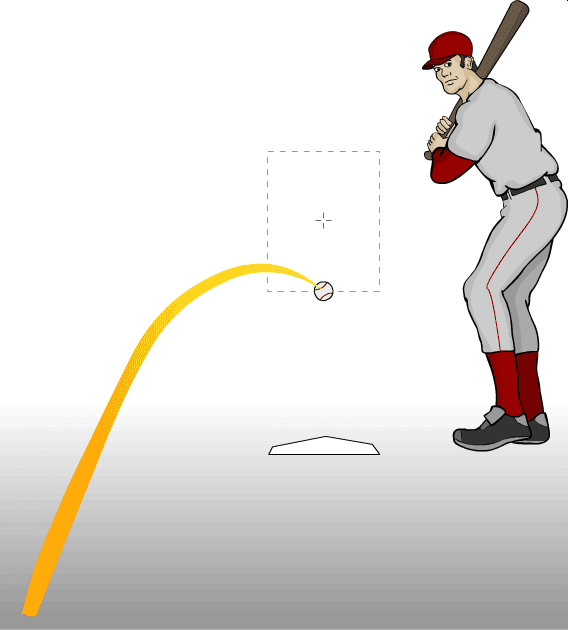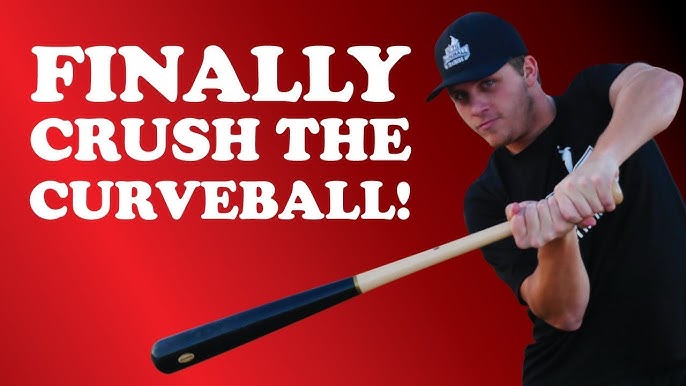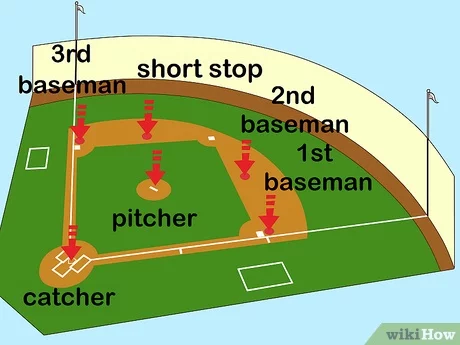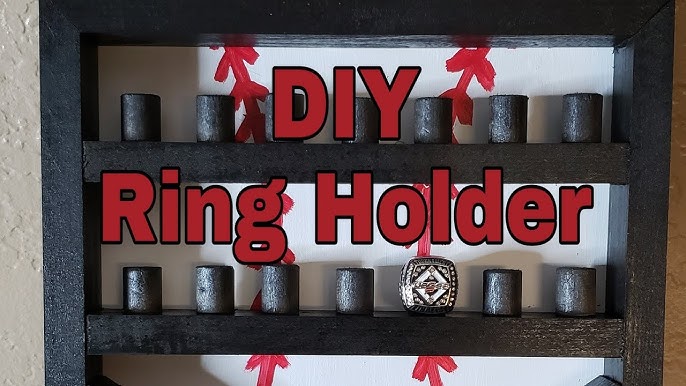Hitting a curveball in Baseball 9 is challenging. It requires skill and practice.
Many players struggle with curveballs due to their unpredictable movement. In Baseball 9, mastering this skill can make a big difference in your performance. Understanding the mechanics and practicing the timing are key. This guide will provide you with practical tips to improve your curveball hitting.
You’ll learn how to recognize the pitch early and adjust your swing for better accuracy. Whether you’re new to the game or looking to refine your skills, these tips will help you face curveballs with more confidence and success. Let’s dive in and make hitting curveballs a strength in your Baseball 9 gameplay.
Introduction To Curveballs
Baseball is a game of skill and strategy. One of the most challenging pitches a batter can face is the curveball. Understanding this pitch is key to improving your performance at the plate. Let’s dive into the world of curveballs and learn how to hit them effectively.
What Is A Curveball?
A curveball is a type of pitch in baseball. It is known for its movement. This pitch starts straight but then drops sharply. The drop makes it hard to hit. The pitcher grips the ball in a special way. This grip creates spin, causing the curve.
History Of The Curveball
The curveball has a long history. It was first thrown in the 19th century. Candy Cummings is credited with inventing it. He used the pitch to confuse batters. Soon, other pitchers began using it too. The curveball changed the game of baseball. It added a new level of challenge for hitters.

Credit: www.youtube.com
Why Hitting A Curveball Is Challenging
Hitting a curveball in Baseball 9 is tough due to its unpredictable trajectory and varying speeds. The ball’s sudden dip often confuses batters, making precise timing crucial.
Hitting a curveball is one of the toughest skills in baseball. Many players struggle with it. The curveball’s movement and speed make it tricky. It requires quick thinking and good technique.Speed And Spin
A curveball has a unique speed and spin. It moves slower than a fastball. This difference can confuse batters. The spin creates a drop in the ball’s path. Batters must adjust to this sudden dip.Timing And Reaction
Timing is crucial when facing a curveball. Batters need to react fast. The curveball’s break happens late. This makes it hard to judge the right moment to swing. A late swing often leads to a miss or weak hit. “`Stance And Positioning
Understanding the right stance and positioning is crucial for hitting a curveball in Baseball 9. Your stance sets the foundation for your swing. Proper positioning helps you react to the curveball’s unpredictable motion. Let’s delve into the essential elements of stance and positioning.
Proper Batting Stance
A proper batting stance starts with your feet shoulder-width apart. Bend your knees slightly to stay balanced. Align your toes towards the pitcher. This helps maintain stability and lets you pivot easily. Keep your weight on the balls of your feet, not your heels.
Your hips should be slightly rotated towards the pitcher. This position allows you to turn quickly. Ensure your head is level and eyes focused on the pitcher. A balanced stance enables you to react fast.
Optimal Bat Position
The bat position is key for hitting a curveball. Hold the bat with your dominant hand on top. Your grip should be firm but relaxed. Position the bat slightly above your shoulder. This stance gives you better control and power.
Keep your elbows slightly bent. This positioning helps you swing smoothly. Ensure your hands are above the strike zone. This readiness helps you adjust to the curveball’s path. Your bat should be parallel to the ground for a quick swing.
Check the table below for a quick summary:
| Aspect | Details |
|---|---|
| Feet Position | Shoulder-width apart, toes towards pitcher |
| Knees | Slightly bent |
| Weight Distribution | On the balls of feet |
| Hips | Slightly rotated towards pitcher |
| Head and Eyes | Level, focused on pitcher |
| Bat Position | Above shoulder, elbows bent |
| Hands | Above strike zone |
| Bat Angle | Parallel to ground |
Remember, practice makes perfect. Keep refining your stance and bat position. With time, hitting curveballs will become second nature.
Recognizing A Curveball
Recognizing a curveball is essential for any baseball player aiming to improve their hitting skills. Curveballs are tricky pitches that can deceive even experienced players. By learning to identify them, you can better prepare for your swing and increase your chances of making solid contact.
Key Visual Cues
Spotting a curveball starts with observing the pitch’s spin. Curveballs have a unique spinning motion. Look for a tighter, downward spin compared to other pitches. The ball often has a tumbling effect. Focus on the rotation as soon as the pitcher releases it.
Another visual cue is the ball’s arc. Curveballs follow a higher, looping path. This arc is different from the straight line of a fastball. Watch for the initial upward movement. Then be ready for the sharp drop.
Pitcher’s Body Language
Pay attention to the pitcher’s delivery. Some pitchers have subtle tells. Notice any changes in their grip. Curveballs often require a different grip than fastballs.
Watch the pitcher’s arm angle. A higher arm angle can indicate a curveball. Also, some pitchers might slow down their motion. This can be a sign of a breaking ball. Stay alert to these small changes.
Adjusting Your Swing
Adjusting your swing to hit a curveball in Baseball 9 takes practice. The curveball is tricky, but with the right techniques, you can improve. Below, we’ll cover some essential tips to help you adjust your swing.
Swing Mechanics
First, let’s talk about swing mechanics. Your stance should be balanced. Keep your feet shoulder-width apart. Bend your knees slightly. Relax your grip on the bat. This allows for smoother movement. Watch the pitcher’s hand closely. This helps you anticipate the curve.
As the ball approaches, keep your eyes on it. Follow the ball from the pitcher’s hand to your bat. Maintain a level swing. Aim to make contact with the ball in the middle of your bat. This increases your chances of hitting the ball squarely.
Adjusting Timing
Timing is crucial for hitting a curveball. Curveballs are slower than fastballs. So, you need to wait longer before you swing. Stay patient. Count to yourself as the ball approaches. This helps you avoid swinging too early.
Start your swing later than you normally would. This allows the ball to break closer to the plate. Swing smoothly and with control. Rushing your swing leads to missed hits. Practice adjusting your timing in batting practice. Focus on waiting for the right moment to swing.
Mental Preparation
Hitting a curveball can be challenging. It requires mental strength and focus. This section will guide you through mental preparation techniques.
Staying Focused
Focus is key in baseball. Keep your mind clear and stay in the moment. Pay attention to the pitcher’s movements. Watch the ball as it leaves the pitcher’s hand. Anticipate the curve and track its path.
Avoid distractions. Stay calm and composed. Deep breaths help to maintain focus. Visualize hitting the ball before stepping up to the plate. This mental picture boosts concentration.
Confidence At The Plate
Confidence is crucial. Believe in your skills. Trust your practice. Approach the plate with a positive mindset. Self-doubt can hinder your performance.
Remind yourself of past successes. Positive affirmations work wonders. Repeat them silently. They build self-assurance. Stay relaxed and ready for the pitch. Confidence increases your chances of hitting the curveball.
Drills And Practice Techniques
Mastering the curveball in Baseball 9 requires dedicated drills and practice techniques. Focused routines help improve your timing and reaction. With the right drills, you can enhance your ability to hit curveballs with consistency and power.
Batting Practice Routines
Start with a solid batting practice routine. Spend time on the basics. Practice your stance, grip, and swing mechanics. Consistency is key. Repetition builds muscle memory. Set aside time for daily practice. Focus on hitting straight pitches first. Gradually introduce curveballs into your practice sessions. This helps in adjusting your timing.
Simulated Curveball Drills
Simulated curveball drills are essential. Use a pitching machine. Set it to throw curveballs at different speeds. Observe the ball’s spin and movement. Watch closely and adjust your stance. Practice hitting these pitches repeatedly. Another drill involves a partner. Have them pitch curveballs to you. This adds a real-life element to your practice.
Track your progress. Record your sessions. Note any improvements or difficulties. Make adjustments based on your observations. Consistent practice with these techniques can improve your curveball hitting skills over time.

Credit: www.amazon.com
Analyzing Successful Hitters
Hitting a curveball in Baseball 9 can be challenging. Understanding how successful hitters achieve this can provide valuable insights. This section breaks down the approaches and techniques used by top players.
Case Studies
Many successful hitters have mastered the curveball. Let’s look at some real-life examples:
Barry Bonds: Bonds excelled at hitting curveballs. He used a keen eye to predict the pitch’s movement. His stance and swing were also adjusted to handle the curve.
Ichiro Suzuki: Ichiro’s approach was unique. He relied on quick reflexes and exceptional hand-eye coordination. His ability to make contact with the ball, regardless of its spin, was remarkable.
Albert Pujols: Pujols displayed great patience at the plate. He waited for the curveball to break before committing to his swing. This allowed him to hit curveballs with power.
Key Takeaways
From these case studies, we can draw some important lessons:
Predict the pitch: Anticipate the curveball based on the pitcher’s patterns. A keen eye helps.
Adjust your stance: Position yourself to handle the curveball. Open up your stance slightly.
Wait for the break: Don’t swing too early. Allow the ball to break before making contact.
Maintain focus: Stay focused and calm. A relaxed mind improves reaction time.
Practice consistently: Regular practice is key. The more you face curveballs, the better you become.
Common Mistakes To Avoid
Hitting a curveball in Baseball 9 is challenging. Many players make common mistakes. These errors can be avoided with practice and awareness. Identifying these mistakes helps improve your hitting skills. Let’s look at two major pitfalls.
Overcommitting
One common mistake is overcommitting. Players often swing too early. They anticipate the curveball too soon. This leads to missing the ball. Stay patient. Watch the ball closely. Let it come to you. This helps you make better contact.
Another aspect of overcommitting is body movement. Players may shift their weight forward too quickly. This makes it hard to adjust to the ball’s path. Keep your weight balanced. Maintain a steady stance. This gives you better control over your swing.
Poor Timing
Poor timing is another frequent error. Players misjudge the curveball’s speed. They swing too late or too early. Timing is crucial for hitting curveballs. Practice helps improve your timing.
Watch for the pitcher’s release point. This helps you predict the ball’s path. React accordingly. Swinging at the right moment is key. Use practice drills to fine-tune your timing. Consistent practice reduces timing errors.
Conclusion And Final Tips
Mastering the curveball in Baseball 9 takes practice and patience. While it may seem challenging at first, consistent effort and focus on the fundamentals will lead to improvement. Let’s summarize the crucial points and offer some final tips to help you become a better hitter against curveballs.
Recap Of Key Points
- Understand the Pitch: Recognize the pitcher’s grip and the ball’s spin.
- Watch for Cues: Look for the pitcher’s release point and arm angle.
- Stay Back: Keep your weight on your back foot to adjust to the pitch’s movement.
- Shorten Your Swing: Use a compact swing to make contact with the ball.
- Practice Regularly: Incorporate curveball drills into your training routine.
Encouragement For Practice
Hitting a curveball is a skill that improves with time. Regular practice is essential. Set aside time each day to work on your hitting technique. Use a batting cage or practice with a partner to simulate game situations. Focus on the basics and gradually build your confidence.
Don’t get discouraged by initial struggles. Even professional players find curveballs challenging. Stay positive and remember that improvement comes with persistence. Celebrate small victories and learn from mistakes. Keep pushing yourself, and you’ll see progress.
Lastly, enjoy the process. Baseball is a game meant to be fun. Embrace the challenges and enjoy the journey of becoming a better hitter.

Credit: en.wikipedia.org
Frequently Asked Questions
How Do You Hit A Curveball In Baseball 9?
To hit a curveball in Baseball 9, focus on the pitch’s movement. Time your swing to match the ball’s break. Practice consistently to improve.
What Is The Best Strategy For Hitting Curveballs?
The best strategy for hitting curveballs is to stay patient. Wait for the ball to break before swinging. Keep your eye on the ball at all times.
Why Is Hitting Curveballs Difficult In Baseball 9?
Hitting curveballs is difficult because of their unpredictable movement. They break sharply, making timing and accuracy crucial for success.
How Can I Improve My Curveball Hitting Skills?
Improve your curveball hitting skills by practicing regularly. Watch the ball closely and adjust your timing. Consistency is key to mastering this skill.
Conclusion
Practicing hitting curveballs can really improve your batting skills. Focus on timing and watching the pitcher closely. Remember to stay patient and wait for your pitch. Keep your stance balanced and your swing steady. With consistent practice, you can handle curveballs better.
Enjoy the game and keep improving your skills. Happy hitting!



